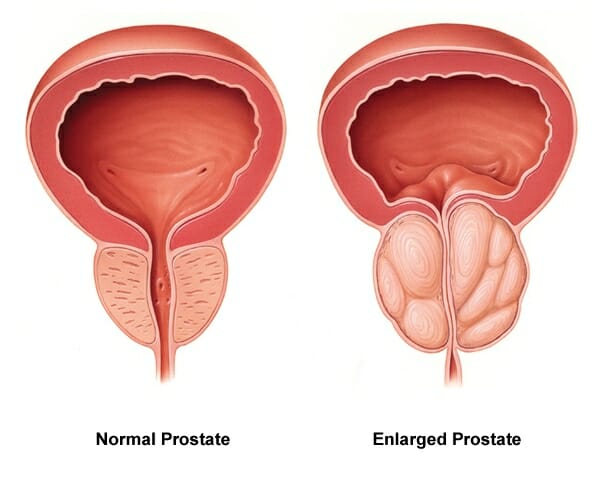
Benign Prostatic Hyperplasia
Benign Prostatic Hyperplasia (BPH) is a common condition that affects many men as they age. In this article, we will explore what BPH is, its prevalence, common symptoms, and various treatment options available.
Benign Prostatic Hyperplasia, often referred to as BPH, is a medical term for the enlargement of the prostate gland. It occurs due to an increase in the total number of cells in the prostate gland, leading to the formation of large prostatic nodules.
This enlargement can result in the blockage of the urethra, causing urinary symptoms.
Prevalence of BPH
BPH is a common condition, particularly among older men. Studies show that nearly 70 percent of men between the ages of 60 and 69, and almost 80 percent of men aged 70 years and above, have some degree of BPH.
Recognizing Symptoms of BPH
The most common symptoms of BPH include:
- Frequent urination, especially at night
- A hesitant, interrupted, or weak stream of urine
- The need to urinate frequently
- Leaking or dribbling of urine


- These symptoms tend to appear over time and may gradually worsen over the years. However, some men have an enlarged prostate that causes few or no symptoms.
- In a small percentage of men, untreated BPH can cause urinary retention, meaning that the man is unable to empty the bladder. The risk of urinary retention increases if your symptoms worsen or as you age.
- Symptoms of BPH also can be caused by other conditions, including prostate or bladder cancer, kidney stones, and overactive bladder.
Treatment
When it comes to managing BPH, several treatment options are available, depending on the severity of symptoms and individual circumstances. Here are the main approaches:
1. Conservative management:
In mild cases, conservative management techniques can be employed to alleviate symptoms. These may include:
- Stopping drinking fluids two hours before bedtime.
- Limiting bladder irritants, such as caffeine and alcohol.
- Being cautious with cold and allergy medications, as they can sometimes worsen symptoms.
- "Double voiding" - attempting to urinate again shortly after the initial voiding.


2. Medications
Several medications can be prescribed to help manage BPH symptoms:
Alpha Blockers: These medications relax the muscles of the prostate and bladder neck, allowing urine to flow more easily. Possible side effects may include dizziness and low blood pressure upon sitting or standing up.
Daily tadalafil: This medication has shown effectiveness in improving symptoms of BPH. Common side effects include headache, flushing, dyspepsia, nasal congestion, back pain, myalgias, and sinusitis.
Alpha-Reductase Inhibitors: These medications can help shrink the prostate by inhibiting the conversion of testosterone to dihydrotestosterone. Side effects may include decreased sex drive, difficulty with erection or ejaculation, or symptoms of depression.
Herbal Medications: Some patients may find relief with herbal supplements, such as saw palmetto, which works similarly to a natural 5-alpha reductase inhibitor. However, the effectiveness of herbal medications may vary among individuals.
Surgery
This is a decision you make with your doctor based on 3 main things
1. The size of your prostate
2. Your bleeding risk
3. Your sexual function
Indications for surgery:
- Medications are no longer working or helping your symptoms
- Urinary retention
- Recurrent urinary tract infection (UTI)
- Recurrent blood in the urine
- Recurrent bladder stones
- If you’re kidneys can’t drain well because of the bph


1. Rezum/water vapor thermal therapy
Rezūm Water Vapor Therapy is an outpatient procedure that uses water vapor, or steam, to shrink an enlarged prostate. In most cases, this procedure does not require a trip to the operating room. We typically do a prostatic block with an ultrasound that is placed transrectally (through the bottom) and numbing of the prostate where you will feel a pinch. The procedure is done through the urethra or “pee tube” and you shouldn’t feel much discomfort except for the feeling of your bladder getting full. You will need a catheter after this procedure for about 48 hours
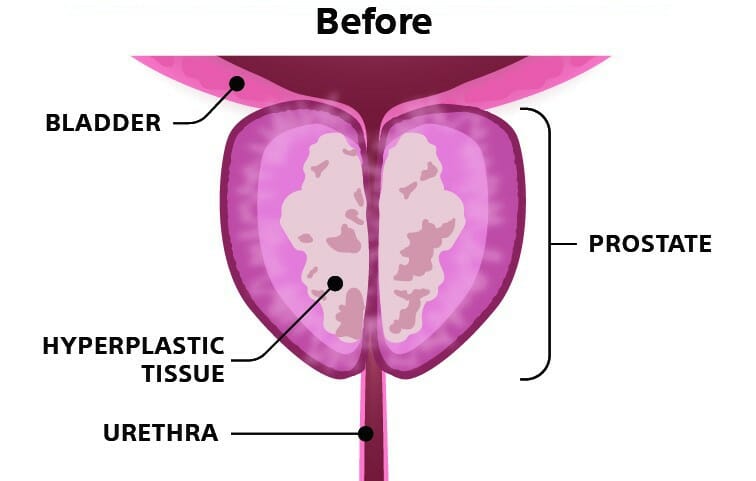
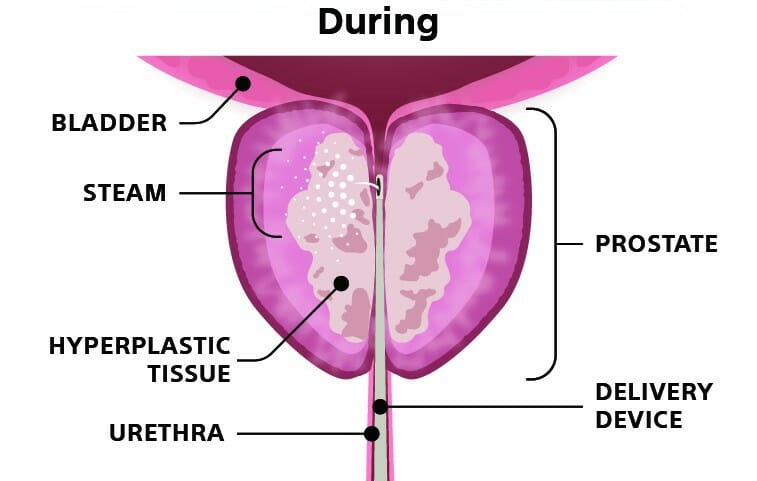
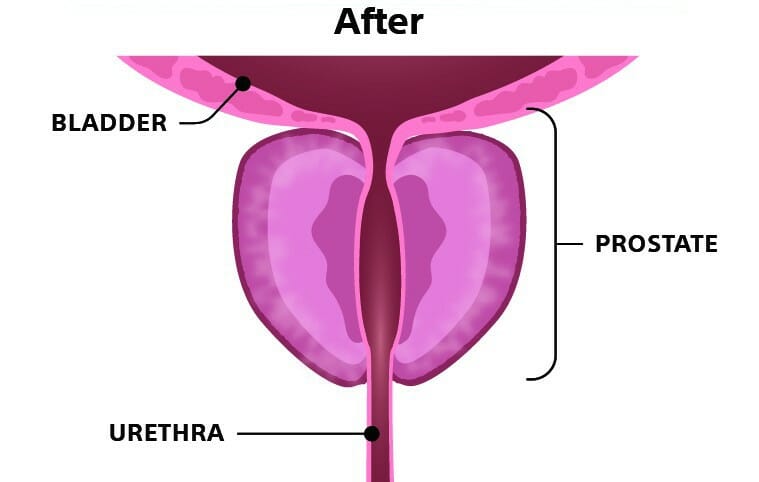
2. Laser Prostatectomy
This is an outpatient surgery that uses laser to remove the enlarged prostate. Typically this is done in the operating room with anesthesia and you are discharged the same day. . The procedure is done through the urethra or “pee tube” with no cuts or incisoins. You will need a catheter after this procedure for about 24 hours. This procedure is an option even if you’re on any blood thinners.
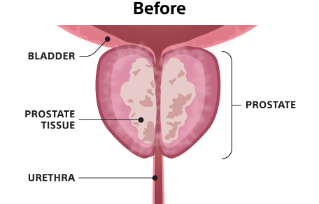
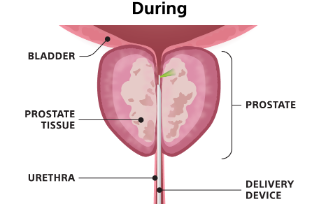
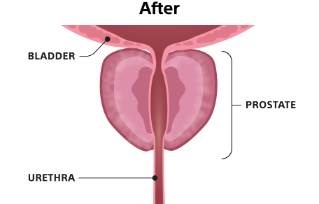
3. Transurethral Resection of the Prostate
This is the oldest treatment that has been used for many years to resect or cut the prostate using a loop from the inside of the urethra (pee tube), sometimes described as a “roto-rooter.” The procedure is done in an operating room with anesthesia through the urethra or “pee tube” with no cuts or incisions. Sometimes patients are required to spend one night in the hospital and other times patients can be sent home the same day. A catheter is needed after this procedure for at least 24 hours, sometimes longer.
Conclusion:
Benign Prostatic Hyperplasia is a common condition that affects a significant percentage of men, particularly as they age. Recognizing the symptoms and seeking appropriate medical attention is crucial for effective management. Treatment options range from conservative measures and medications to surgical interventions, depending on the severity of symptoms and individual circumstances. Consulting with a healthcare professional specializing in urology will help determine the most suitable approach to alleviate symptoms and improve your quality of life.


